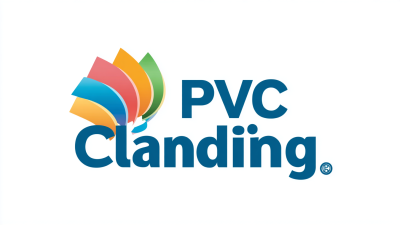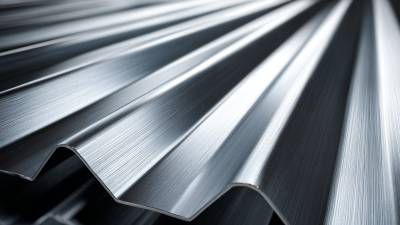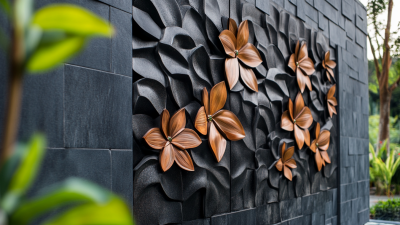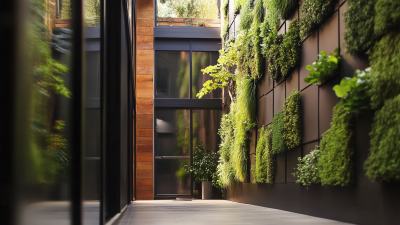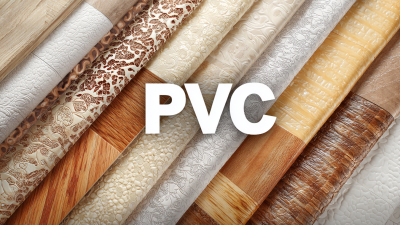
In recent years, the building industry has witnessed a remarkable shift towards innovative materials, with the "Plastic Cladding Exterior" emerging as a frontrunner in this transformation. According to a report by MarketsandMarkets, the global market for exterior cladding is projected to reach $285.18 billion by 2025, with plastic cladding capturing an increasing market share due to its durability, cost-effectiveness, and low maintenance requirements. The rise in demand for sustainable building practices and energy-efficient solutions has further propelled the adoption of plastic cladding, as it offers both aesthetic versatility and significant long-term savings. As architects and builders seek materials that not only meet the rigorous standards of modern construction but also align with eco-friendly initiatives, the advantages of plastic cladding become more evident, solidifying its position as a dominant solution in the building industry.

The emergence of plastic cladding has reshaped the landscape of modern building design, providing architects and builders with a versatile and innovative material. As environmental awareness grows, the demand for sustainable alternatives has led to a remarkable surge in the use of plastic cladding. This material not only offers exceptional aesthetic appeal but also boasts remarkable durability and low maintenance requirements, making it a standout choice for contemporary structures.
One key tip for integrating plastic cladding into your exterior design is to consider the architectural style of your building. Plastic cladding comes in various styles, colors, and finishes, allowing you to create a seamless blend with traditional or modern designs. Additionally, ensure proper installation to maximize the benefits of its weather-resistant properties, which can significantly enhance a building's longevity and energy efficiency.
Another important aspect to keep in mind is the insulation benefits offered by plastic cladding. When selecting your cladding, look for options that incorporate insulation technology. This not only improves thermal performance but also reduces energy costs, making your building more sustainable in the long run. By thoughtfully choosing the right plastic cladding, you can elevate both the performance and visual appeal of your property.

Plastic cladding has increasingly become the go-to choice for many builders and architects, and its unmatched durability is a significant factor. Unlike traditional materials such as wood or vinyl, plastic cladding is engineered to withstand harsh weather conditions, resist fading, and require minimal maintenance. This resilience means that buildings clad in plastic can endure the elements—from blistering heat to freezing cold—without degradation, making it a long-term investment for homeowners and developers alike.
Moreover, plastic cladding's resistance to rot, pests, and corrosion further amplifies its appeal. While wood may succumb to termites and moisture damage, and metal can rust over time, plastic remains impervious to these issues. This longevity not only reduces replacement costs but also minimizes the need for frequent repairs, allowing property owners to focus on more important matters.
By choosing plastic cladding, builders are ensuring that their projects maintain a fresh appearance and structural integrity, assisting in creating sustainable and futuristic designs.
The rise of plastic cladding in the building industry is primarily attributed to its aesthetic versatility, allowing architects and designers to explore a multitude of creative options. According to the “Global Building Materials Market” report by MarketsandMarkets, the demand for sustainable and attractive building materials is projected to grow at a CAGR of 5.7% over the next five years. This trend underscores the value of plastic cladding, as it comes in various colors, finishes, and textures that can mimic traditional materials such as wood, stone, or metal, without the associated maintenance costs.
Additionally, a study conducted by Freedonia Group indicates that the plastic manufacturing segment in the construction sector is anticipated to reach $217 billion by 2024, illustrating a significant shift towards innovative building materials. The lightweight nature of plastic cladding not only enhances the visual appeal of buildings but also contributes to improved energy efficiency by providing better insulation. This dual benefit of aesthetic enhancement and functionality aligns perfectly with modern building trends, making plastic cladding a compelling choice for contemporary designs that value both form and function.

In today’s construction landscape, the shift towards eco-friendly solutions is becoming increasingly prominent. Plastic cladding, in particular, has emerged as a frontrunner in sustainable building materials. This innovative exterior not only offers aesthetic versatility but also boasts a remarkable sustainability edge. Made from recyclable materials, plastic cladding minimizes waste and reduces the environmental impact typically associated with traditional building materials. Furthermore, it is often manufactured using advanced technologies that lower energy consumption during production, aligning perfectly with modern green architecture principles.
Additionally, plastic cladding provides durability and low maintenance, essential traits desired in today’s building solutions. Its resistance to the elements means longer-lasting exteriors, reducing the frequency and resource demands of repairs or replacements. As the construction industry continuously seeks ways to incorporate sustainable practices, the rise of plastic cladding symbolizes a commitment to innovation and environmental stewardship. By choosing materials that prioritize sustainability, builders not only enhance the longevity of their projects but also contribute positively to global ecological efforts.
| Reason | Description | Sustainability Impact | Longevity |
|---|---|---|---|
| Eco-Friendly Material | Made from recycled materials, reducing plastic waste. | Low carbon footprint; promotes recycling. | Lasts over 30 years with minimal maintenance. |
| Energy Efficiency | Better insulation reduces energy consumption. | Decreases energy use and greenhouse gas emissions. | Remains effective throughout lifespan. |
| Aesthetic Versatility | Available in various colors and designs. | Allows creative building designs with sustainable materials. | Endures diverse weather conditions without fading. |
| Low Maintenance | Resistant to rot, corrosion, and pests. | Reduces the need for repairs and replacements. | Longevity further enhances low upkeep costs. |
| Customization Options | Easily adaptable for unique architectural needs. | Encourages innovative sustainable designs. | Designed for long-term use and adaptability. |
Plastic cladding has emerged as a frontrunner in the building industry, largely due to its
cost-effectiveness. A recent report from the
U.S. Department of Housing and Urban Development suggests that using plastic cladding can reduce construction costs by up to
20% compared to traditional materials such as wood or brick. This significant saving is attributed
to the lower material costs and reduced labor time required for installation, making it an ideal option for builders aiming to maximize their budgets.
Additionally, the durability of plastic cladding contributes to its economic advantages. According to market research by Grand View Research,
the lifespan of plastic cladding can exceed 30 years with minimal maintenance, thereby lowering long-term replacement costs.
Builders can also take advantage of energy efficiency; buildings clad in plastic often require less thermal energy for heating and cooling, which can result in energy savings of up to
30%. This dual benefit of initial and ongoing cost savings makes plastic cladding a smart
investment for both builders and property developers looking to enhance their project's profitability.
